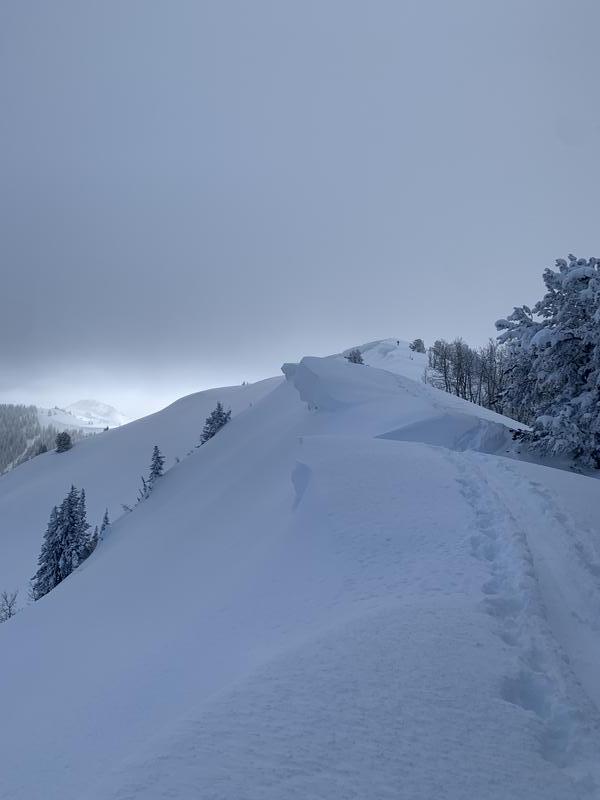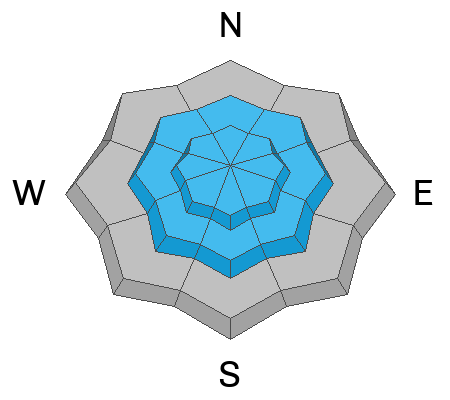Forecast for the Provo Area Mountains

Issued by Nikki Champion on
Thursday morning, January 19, 2023
Thursday morning, January 19, 2023
The avalanche danger is MODERATE at all upper and mid-elevation slopes where freshly formed wind drifts, and both soft slab and dry loose avalanches within the new snow are the main avalanche problems. The avalanche danger is LOW at the lower elevations where there has been less new snow. Evaluate snow and terrain carefully today.
Practice safe travel techniques, exposing only one person at a time to steep terrain over 30 degrees. Even a small avalanche could entrain a large amount of snow today, think about where a rider might end up if swept off their feet.

Low
Moderate
Considerable
High
Extreme
Learn how to read the forecast here









